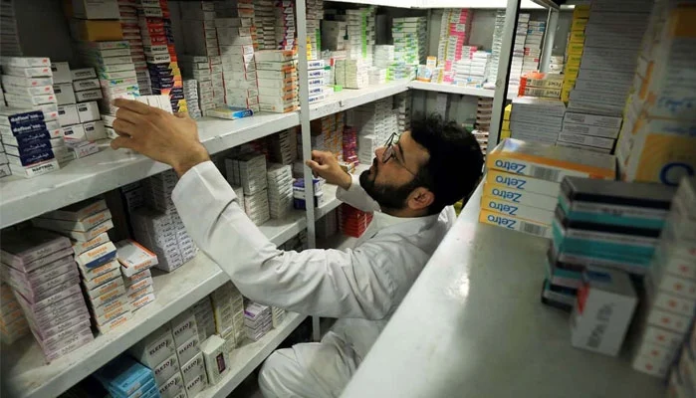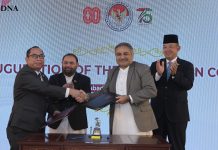ISLAMABAD, MAY 15 (DNA): Pakistan’s retail pharmaceutical industry has witnessed a significant surge in sales, crossing the Rs1.049 trillion threshold for the 12 months ending in March 2025.
This represents a robust growth of 20.62% in rupee terms and an even higher 23.14% when viewed in United States dollar terms.
However, a closer look at the data reveals that this impressive revenue growth is primarily fuelled by substantial price increases rather than a significant uptick in the volume of medicines consumed.
According to the latest Market Access Tracker (MAT) Q1 2025 report from IQVIA Pakistan, the actual unit sales of pharmaceuticals saw a comparatively modest increase of just 3.63% year-on-year, reaching 3.77 billion units.
This stark contrast between the soaring value and the limited volume growth highlights a widening disparity within the market.
Analysts attribute over two-thirds of the market’s growth this year to price escalation, as national and multinational firms adjusted prices amidst inflation and currency pressures.
The IQVIA Pakistan report further indicates that the industry has grown at a compound annual growth rate (CAGR) of 19.09% in rupee value over the past four years, while the CAGR in US dollar terms stands at just 4.05% — suggesting that the rupee’s depreciation and pricing dynamics are major contributors to the overall revenue surge.
However, the modest increase in units sold — just 5.49% over five years — raises concern about the affordability and accessibility of medicines for the average Pakistani.
National pharmaceutical companies dominated the market in terms of volume, selling 2.91 billion units with a year-on-year growth of 4.98%.
Multinational companies (MNCs), on the other hand, experienced a 0.72% decline in units sold, slipping to 856 million, despite recording a 19.04% increase in sales value. This divergence illustrates how multinationals, too, benefited from price-led growth rather than expanded demand.
The October-December 2024 quarter emerged as the most profitable in Pakistan’s pharmaceutical history, with monthly sales hitting an all-time high of Rs96.48 billion in October alone. Of this, national companies contributed Rs75.39 billion and MNCs Rs21.09 billion.
The industry maintained this elevated pace through the subsequent quarters, although the underlying driver remained price rather than volume.
Corporate concentration also remains high, with 87 companies each surpassing Rs1 billion in annual sales and collectively holding a 96.52% market share.
The most dominant group includes 20 companies with sales exceeding Rs40 billion — among them Getz Pharma, Sami, GSK, Abbott, Searle, and Martin Dow — which together account for Rs450 billion in value and a 42.92% market share. This group alone posted a combined growth rate of 23.28% over the previous year.
Companies in the Rs10 billion to Rs40 billion revenue tier added another Rs348 billion to the total industry value, with a 33.18% market share and average growth of 15.7%.
Firms in the Rs5 billion and above segment contributed Rs124 billion in revenue, growing by 23.4% year-on-year, driven mainly by strong domestic players such as Hilton, OBS, High-Q, PharmEvo, and Ferozsons.
Among multinational players, Abbott, GSK, Haleon, Novartis, and Novo Nordisk emerged as top contributors, with seven of the top ten MNCs achieving double-digit growth.
However, IQVIA’s absolute growth analysis confirms that much of the industry’s overall gain came from price increases, with 68.96% of the total market’s growth attributed to pricing. New product launches accounted for 10.44% of the growth, while volume contributed just 17.99%.
A total of 636 new products were launched over the past year, including 623 by national companies and only 13 by MNCs. These contributed Rs7.15 billion in new revenue, equivalent to less than 1% of the total market.
Industry analysts warn that while the revenue surge paints a picture of market growth, it also masks critical structural issues. The minimal increase in unit consumption combined with heavy price reliance suggests that many patients may be priced out of essential treatments.
Experts urge greater regulatory oversight on pricing mechanisms, improved public sector procurement strategies, and policies that balance profitability with public health priorities.

















